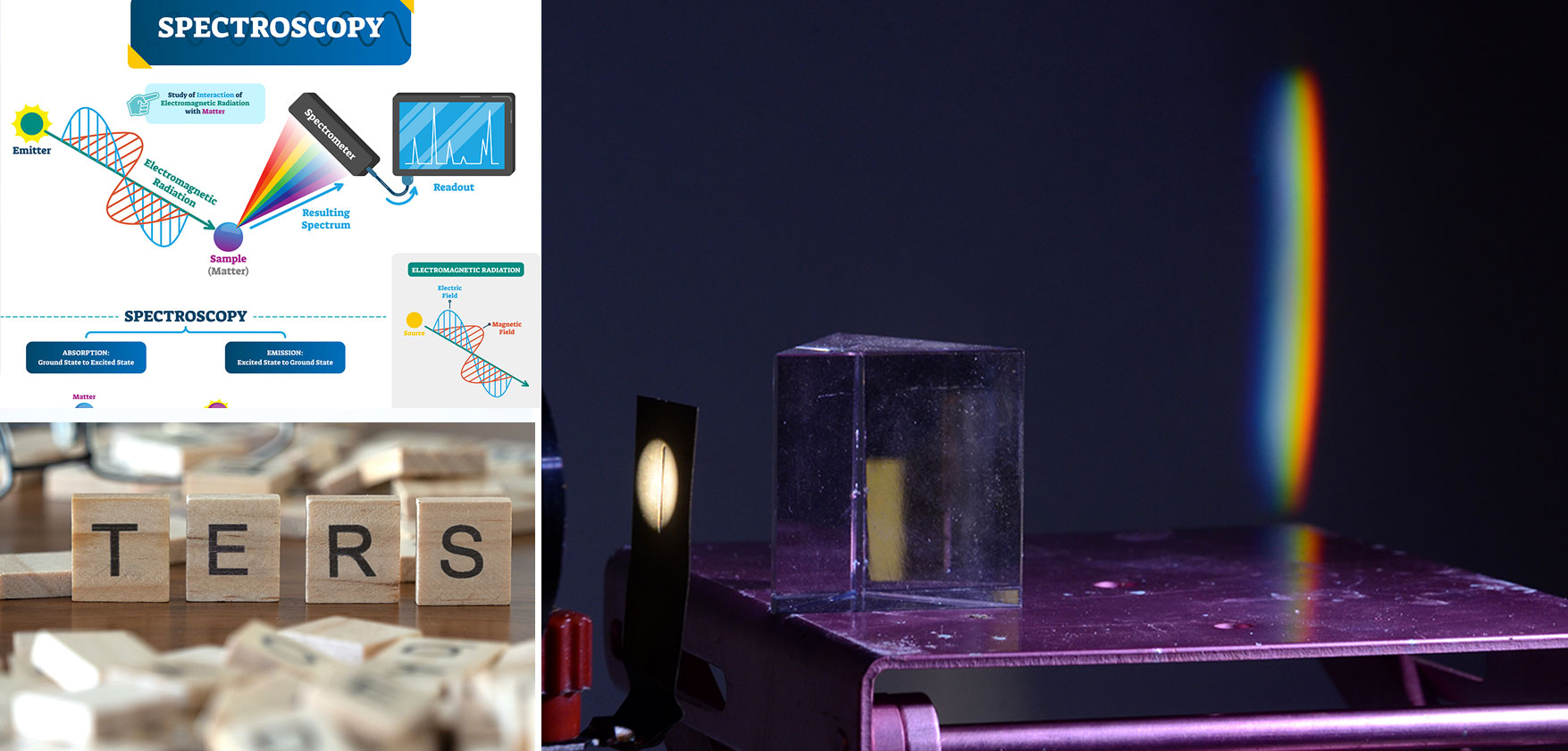
The CNOS laboratory of Spectroscopy offers a top notch set of RAMAN, INFRARED, FLUORIMETRIC and ELLIPSOMETRIC spectrometers. By this aim, the development of highly sensitive quantitative and qualitative analytical methods can be carried out in a wide range of research fields, including: biomedicine, pharmaceutics, environment, cultural heritage, materials, optics. The main scope of this facility is to offer the highest levels of technology and quality for the characterization of samples in solid, liquid, films or fiber state using high resolution systems. The laboratory is available for the development of innovative and non-destructive analytical methods using minimal quantities of sample. Furthermore, we offer an in situ RAMAN analysis service thanks to the availability of a portable system.
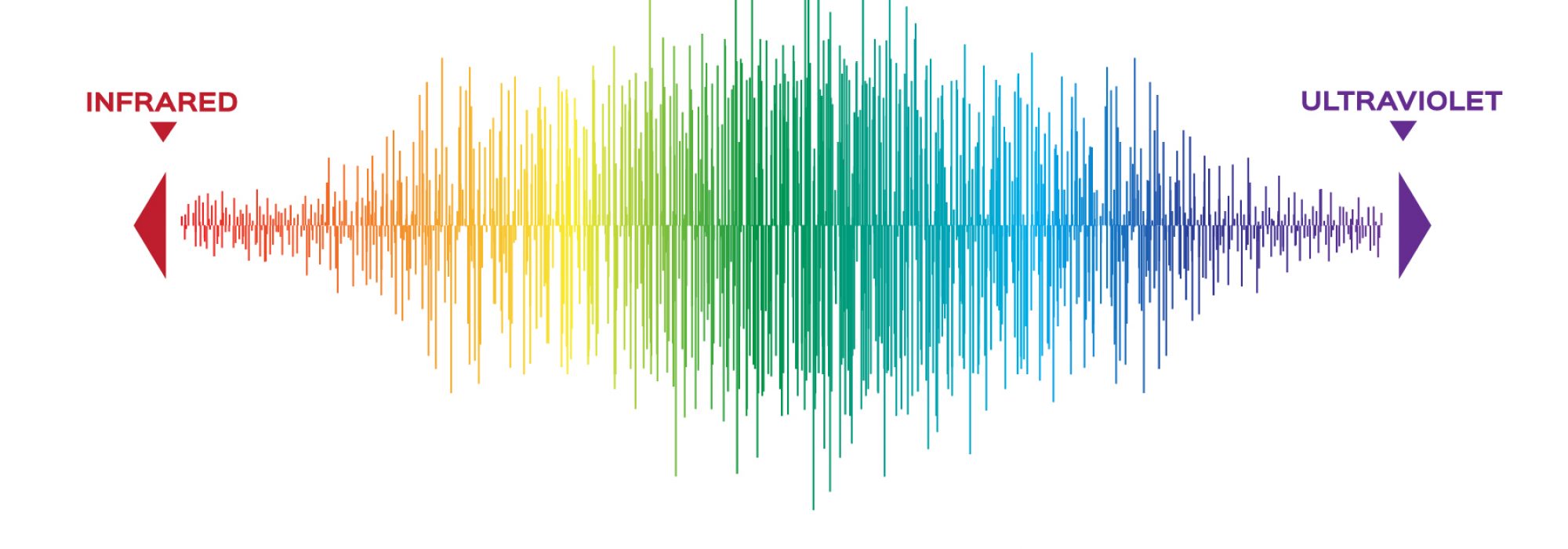
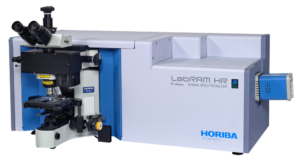 The LabRAM HR Evolution Raman microscope is ideally suited for both micro and macro measurements, and offer advanced confocal imaging capabilities in 2D and 3D. The true confocal Raman microscope enables the most detailed images and analyses to be obtained with speed and confidence. It is one of the most sensitive instruments on the market, with high throughput diffraction limited spatial resolution. Spectrally, the high- resolution spectrometer (up to ±0.5 cm-1) allows subtle sample information such as crystallinity, polymorphism, strain, concentration and other band analysis to be characterized with ease. It is provided by 532, 633, 785 and 1064 nm lasers with 300 and 1800 l/mm gratings allowing detailed sample characterization from many varied materials. The unique combination of innovative optics, detectors and software combine to provide true confocal Raman imaging with an unmatched speed of data acquisition. Therefore, 2D and 3D Raman chemical images can be performed on a broad kind of samples in different physical states: solid, liquid and thin films.
It also provides the possibility to perform combined Raman-AFM analysis and TERS (tip enhanced Raman scattering) nano-Raman. SERS analysis can be also carried out.
The LabRAM HR Evolution Raman microscope is ideally suited for both micro and macro measurements, and offer advanced confocal imaging capabilities in 2D and 3D. The true confocal Raman microscope enables the most detailed images and analyses to be obtained with speed and confidence. It is one of the most sensitive instruments on the market, with high throughput diffraction limited spatial resolution. Spectrally, the high- resolution spectrometer (up to ±0.5 cm-1) allows subtle sample information such as crystallinity, polymorphism, strain, concentration and other band analysis to be characterized with ease. It is provided by 532, 633, 785 and 1064 nm lasers with 300 and 1800 l/mm gratings allowing detailed sample characterization from many varied materials. The unique combination of innovative optics, detectors and software combine to provide true confocal Raman imaging with an unmatched speed of data acquisition. Therefore, 2D and 3D Raman chemical images can be performed on a broad kind of samples in different physical states: solid, liquid and thin films.
It also provides the possibility to perform combined Raman-AFM analysis and TERS (tip enhanced Raman scattering) nano-Raman. SERS analysis can be also carried out.
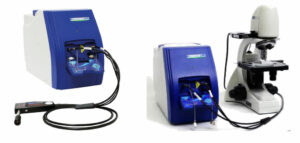 The i-Raman Plus 785 is a portable Raman spectrometer with a wide spectral range and high resolution with configurations which allow measurements from 65 cm-1 to 3,350 cm-1. The system’s small footprint, lightweight design, and low power consumption ensure research-grade Raman analysis capabilities at any location. The i-Raman Plus is equipped with a fiber probe for easy sampling, and can be used with a cuvette holder, a video microscope with several objectives, as well as an immersion shaft for performing analysis on liquids. This is a small portable device for performing in situ Raman measurements (also SERS) with high spectral resolution in real time and with short acquisition times. Macro and micro measurements can be done in situ thanks to a portable microscope. Moreover, there is not limitation of sample size and qualitative and quantitative analysis can be performed. It is provided by a 785 nm laser and a High Quantum Efficiency CCD Array detector. A spectral resolution of 4.5 cm-1 is achieved with the system. In order to ensure the good state of the sample, the laser power can be modulated from 0 to 100% (adjustable at 1% increments).
This instrument has been successfully used for art and archeology, bioscience and medical diagnosis, pharmaceutical applications, polymers and chemical processes, environmental science, geology, forensics, gemology.
The i-Raman Plus 785 is a portable Raman spectrometer with a wide spectral range and high resolution with configurations which allow measurements from 65 cm-1 to 3,350 cm-1. The system’s small footprint, lightweight design, and low power consumption ensure research-grade Raman analysis capabilities at any location. The i-Raman Plus is equipped with a fiber probe for easy sampling, and can be used with a cuvette holder, a video microscope with several objectives, as well as an immersion shaft for performing analysis on liquids. This is a small portable device for performing in situ Raman measurements (also SERS) with high spectral resolution in real time and with short acquisition times. Macro and micro measurements can be done in situ thanks to a portable microscope. Moreover, there is not limitation of sample size and qualitative and quantitative analysis can be performed. It is provided by a 785 nm laser and a High Quantum Efficiency CCD Array detector. A spectral resolution of 4.5 cm-1 is achieved with the system. In order to ensure the good state of the sample, the laser power can be modulated from 0 to 100% (adjustable at 1% increments).
This instrument has been successfully used for art and archeology, bioscience and medical diagnosis, pharmaceutical applications, polymers and chemical processes, environmental science, geology, forensics, gemology.
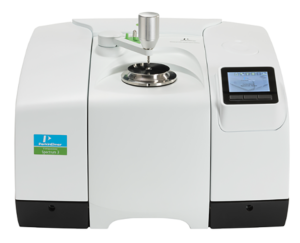 The Spectrum 3 MIR spectrometer allows performing FT-IR in different modes such as absorbance and ATR. From routine identification and verification of raw materials to advanced research applications, this instrument provides sampling flexibility so to analyze nearly any sample type: solid, liquid, powder, gel, paste, film.
It covers a spectral range from 8300 to 350 cm-1 (KBr beamsplitter) and it has an exceptional signal-to-noise ratio and photometric performance. Moreover, high reproducibility of spectral data without spectral interferences is achieved. Rapid chemical processes can be followed to gain deeper insights into reaction kinetics, while collecting data at speeds up to 100 scans per second. Provided with a DTGS Peltier cooled detector it could arrive up to 0.4 cm-1 of spatial resolution.
The Spectrum 3 MIR spectrometer allows performing FT-IR in different modes such as absorbance and ATR. From routine identification and verification of raw materials to advanced research applications, this instrument provides sampling flexibility so to analyze nearly any sample type: solid, liquid, powder, gel, paste, film.
It covers a spectral range from 8300 to 350 cm-1 (KBr beamsplitter) and it has an exceptional signal-to-noise ratio and photometric performance. Moreover, high reproducibility of spectral data without spectral interferences is achieved. Rapid chemical processes can be followed to gain deeper insights into reaction kinetics, while collecting data at speeds up to 100 scans per second. Provided with a DTGS Peltier cooled detector it could arrive up to 0.4 cm-1 of spatial resolution.
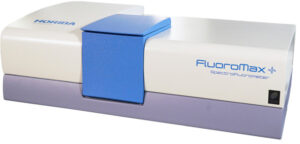 The FluoroMax-Plus is considered the most sensitive benchtop spectrofluorimeter currently on the market. The instrument allows to analyze both solid and liquid samples with sensitivity approximately 1,000 times greater than absorbance spectrophotometric methods. The instrument is equipped with a thermostat holder that allows to carry out measurements on 4 samples at the same time at a controlled temperature, in an emission range between 200 and 1700 nm. The high sensitivity of fluorescence measurements enables the detection of molecules intrinsically fluorescent or labeled with fluorophores, in very diluted samples (femtomols) using minimal volumes (5-500uL). Furthermore, the techniques based on the fluorescence resonance energy transfer (FRET) allow to quantify with extreme precision the interactions between biological macromolecules (protein-protein, protein-nucleic acid, protein-lipid).
APPLICATIONS: pharma, environment, chemistry, analytical sciences, nanomaterials, medical and bioscience, polymers, material research, geology, food science, cosmetics, forensics.
The FluoroMax-Plus is considered the most sensitive benchtop spectrofluorimeter currently on the market. The instrument allows to analyze both solid and liquid samples with sensitivity approximately 1,000 times greater than absorbance spectrophotometric methods. The instrument is equipped with a thermostat holder that allows to carry out measurements on 4 samples at the same time at a controlled temperature, in an emission range between 200 and 1700 nm. The high sensitivity of fluorescence measurements enables the detection of molecules intrinsically fluorescent or labeled with fluorophores, in very diluted samples (femtomols) using minimal volumes (5-500uL). Furthermore, the techniques based on the fluorescence resonance energy transfer (FRET) allow to quantify with extreme precision the interactions between biological macromolecules (protein-protein, protein-nucleic acid, protein-lipid).
APPLICATIONS: pharma, environment, chemistry, analytical sciences, nanomaterials, medical and bioscience, polymers, material research, geology, food science, cosmetics, forensics.
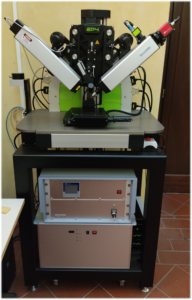 The Accurion NANOFILM EP4 ellissometer is an instrument able to combine spectroscopic ellipsometry (UV/VIS/NIR) and microscopy for the analysis of the optical properties and microscopic visualization of thin films. Its principle of operation is based on a precise measurement of the change (in amplitude and phase) of the polarization state of the light reflected or transmitted (in case of anisotropic materials), whose numerical computation allows to fully characterize the analysed samples providing refractive index, absorption coefficient and thickness. The system is able to provide live images of the sample, permitting to observe structures and/or defects, and to select the region(s) of interest for enhanced-contrast ellipsometric measurements, with an ellipsometric lateral resolution down to 1 µm. EP4 allows to create 3D maps of the lateral variation of the thickness or refractive index through a single measure. Its modular system allows the integration of a number of accessories, which are able to extend its potentialities (holder for non-conventional substrates, SPR, cells for measure of solid/liquid samples, micro-fluidics, temperature control, electrochemistry cells, etc.).
The Accurion NANOFILM EP4 ellissometer is an instrument able to combine spectroscopic ellipsometry (UV/VIS/NIR) and microscopy for the analysis of the optical properties and microscopic visualization of thin films. Its principle of operation is based on a precise measurement of the change (in amplitude and phase) of the polarization state of the light reflected or transmitted (in case of anisotropic materials), whose numerical computation allows to fully characterize the analysed samples providing refractive index, absorption coefficient and thickness. The system is able to provide live images of the sample, permitting to observe structures and/or defects, and to select the region(s) of interest for enhanced-contrast ellipsometric measurements, with an ellipsometric lateral resolution down to 1 µm. EP4 allows to create 3D maps of the lateral variation of the thickness or refractive index through a single measure. Its modular system allows the integration of a number of accessories, which are able to extend its potentialities (holder for non-conventional substrates, SPR, cells for measure of solid/liquid samples, micro-fluidics, temperature control, electrochemistry cells, etc.).
Main features: